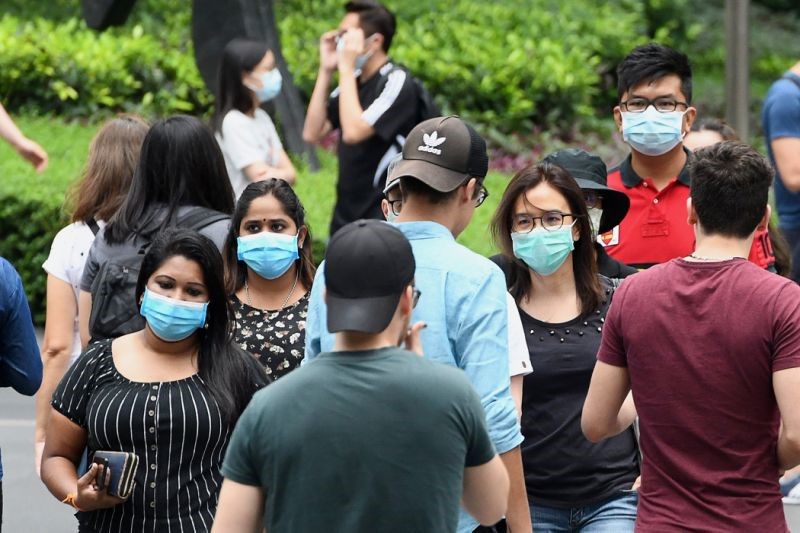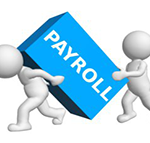Can Non Essential Employer request their employees take Annual Leave?

The Outbreak of COVID19 are now more than 150,000 COVID-19 cases and more than 5,000 deaths across 135 countries and the death toll keep increasing. Based on this latest situation, the Multi-Ministry Task force implement a various precautions step to put in place additional border restriction measures and safe distancing measures, as a circuit breaker to pre-empt the trend of increasing local transmission of COVID-19. Such stringent control which take effect on 7 April 2020 to 4 May 2020 (Inclusive) aims to minimize movements and interactions in private or public area such as commuter, shopping mall, commercial building, institution and etc. Unless it’s for essential purpose, otherwise it’s a rules to require all people work from home and for those schooling adopting home based learning. Essential Services and their related supply chains, as well as entities that form a part of the global supply chain, are exempted from the suspension. Due to this, many issue arise due to employee salary. Employer can pay their salary or let the staff take annual leave as an action to be fair to company.
For sure, it poses a great impact on business sales and cash flow. Let’s see what’s an option that could help employers keep their business during this hard time. All Employers shall try their best to adapt flexibility job arrangement to allow employees work from home. If it’s not possible to do so due to nature of business operation, employers are encouraged to provide additional paid leave on top of employees’ annual leave entitlements for the LOA/SHN especially if the travel was work-related.
For those eligible on LOA/SHN, employers can provide additional paid leave as hospitalization leave and levy waiver during LOA/SHN period.
Other options for employers include (or combination one of following option):
- Treat employees’ LOA/SHN as paid hospitalisation leave or paid outpatient sick leave;
- Allow employees to apply for annual leave;
- Allow employees to use advanced paid leave or apply for no pay leave, for employees who have used up their annual leave entitlements; or
- Other mutually agreed arrangements between the employers and employees / unions.
For those employers greatly affected by COVID-19 prior to the circuit breaker, they may have worked out cost-saving measures with employees or unions for salary arrangement. Taking into consideration the JSS. Such cost-saving measures should continue and must notify MOM if reduction of salary exceed 25% based on total basic pay and involve at least 10 employees.
For other employers whether it’s essential or non-essential, tripartite partners strongly urge them not to resort to retrenchments or prolonged no-pay leave (NPL) to manage business costs during Circuit Breaker. Employers shall tap to enhanced JSS pay-out for April 2020 (75% of 1 month of wages) to pay their staff salaries and CPF as show on table 1
Table 1: Recommended salary arrangements (7 April – 4 May 2020)
| Gross monthly salary of local employee | ||
| Up to $4,600 | More than $4,600 | |
| Employer assigns work to employee to complete at home | Continue to pay their prevailing salaries, including employer’s CPF contributions. | Use all the enhanced JSS pay-out for April to provide for a baseline pay to employees including the employer’s share of the CPF contributions; and Provide for work done on a pro rata basis – for example, if the employee works half-load (i.e. at 50%), the employer should pay the employee 50% of his monthly salary in addition to the JSS pay-out for April, subject to a cap of his prevailing salary. |
| Employer does not assign work to employee | Use all the enhanced JSS pay-out for April to provide for a baseline pay to the employee including employer’s CPF contributions. | |
Employer can consider additional measure to make up for the shortfall after implementing salary arrangement in table 1:
- Send the employee for training courses approved for Absentee Payroll Funding4 so that salary paid to the employee during training would be mostly supported by the Government;
- Apply for Flexible Work Schedule (FWS) which allows “time banking” of additional salary payments to offset overtime payments in the future;
- Grant additional paid leave to the employee; or
- Allow the employee to consume his existing leave entitlements.
- Employers should also allow and support their local employees to take on a second job (e.g. part-time or temporary job with another employer) in companies or public agencies that could continue to operate during Circuit Breaker to make up for the employees’ loss of income and mitigate the negative impact on their livelihood.


Foreign Workers Levy Rebates
Knowing that lot of workers for non-essential service sector and unable to work from home due to nature of business operation, employers must continue to responsible for their maintenance, upkeep and work out mutually agreed salary and leave arrangements with the unions and employees, especially work permit holders with low wages may need more support. Example such as consume their annual leave entitlements. Where annual leave entitlements are exhausted, employers should provide salary support for their foreign employees and may apply for FWS to time-bank part of the salaries to cover overtime work after Circuit Breaker. There’s levy waived and rebates introduce by government to provide one-off FWL rebate of $750 for each work permit or S Pass holder based on previous levies paid in 2020.
For work permit holder staying at dormitory and drawing a basic pay of $600 per month, employer can pay the foreign employee $450 as salary and also for his food and accommodation during Circuit Breaker. However, work-related allowances such transport and shift allowances can be forgone.
Based on this article explained, we can foresee the effort of government in line with combat COVID-19 shall effectively enable employers to preserve their manpower in order to quickly resume operations after Circuit Breaker and request employees to apply Annual Leave is not merely an option.




